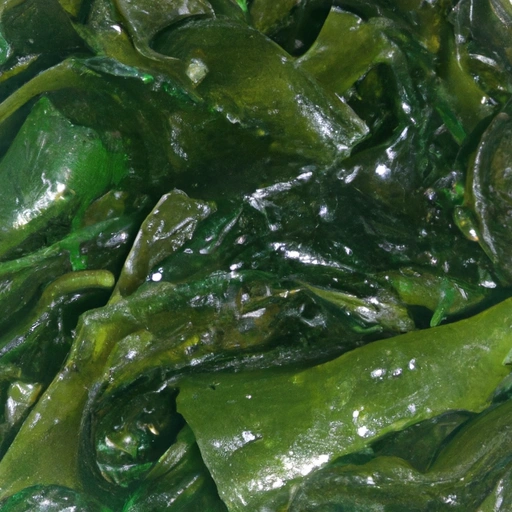Seaweed
Description

Seaweed refers to various species of marine algae and plants that grow in oceans, rivers, and lakes. The term encompasses numerous types, including nori, kelp, wakame, and dulse, each with its unique flavor, texture, and culinary applications. Seaweed is appreciated for its versatility in cooking and is a staple ingredient in many Asian cuisines, particularly Japanese, Korean, and Chinese. It is also gaining popularity in American and European kitchens for its nutritional benefits and as a sustainable food source.
Common uses
Seaweed is commonly used as a condiment, a snack, or as a component in a variety of dishes. It can be found in the form of dried sheets, flakes, or powder, and is often used to wrap sushi rolls, season soups, or add a savory umami flavor to a multitude of recipes. Additionally, seaweed salads and seaweed chips are popular ways to enjoy this marine vegetable.
Nutritional value
Calories
Seaweed is low in calories, with a typical serving (about 1/8 cup or 10 grams) containing approximately 5 to 20 calories, depending on the variety.
Protein
Seaweed is a good source of protein with certain types like spirulina containing up to 8 grams of protein per 2 tablespoons (about 30mL or 10 grams).
Fat
Seaweed is generally low in fat, with most varieties containing less than 1 gram of fat per serving.
Carbohydrates
Carbohydrates in seaweed can vary but are typically low, with about 1 to 3 grams per serving (1/8 cup or 10 grams).
Vitamins
Seaweed is rich in vitamins, particularly vitamin A, vitamin C, and certain B vitamins, including B12, which is rarely found in plant foods.
Minerals
It is also a valuable source of minerals such as iodine, calcium, iron, magnesium, and potassium, contributing to its reputation as a nutrition powerhouse.
Health benefits
Consuming seaweed can offer numerous health benefits, including improved thyroid function due to its high iodine content, enhanced digestive health attributed to its dietary fiber, and potential anti-inflammatory and anti-cancer properties stemming from its antioxidants and phytonutrients.
Potential risks
While seaweed is generally considered safe for consumption, excessive intake can lead to too much iodine, which may impact thyroid function. It's also important to source seaweed from unpolluted waters to minimize the risk of exposure to heavy metals and other contaminants.
Common recipes
Seaweed is a versatile ingredient featured in recipes such as sushi, miso soup, seaweed salad, and various stir-fries. It can also be used as a garnish or a flavor enhancer in grain dishes and smoothies.
Cooking methods
Seaweed can be eaten raw, dried, or cooked. It can be rehydrated for use in salads and soups or toasted for a crisp texture in snacks and garnishes.
Pairing with other ingredients
Seaweed pairs well with ingredients like soy sauce, sesame oil, ginger, garlic, cucumber, tofu, and fish, complementing their flavors and adding a unique depth to the dishes.
Summary
Seaweed is a nutritionally rich and ecologically sustainable food ingredient that has been part of human diets for centuries. With its growing popularity in global cuisine, seaweed not only enhances the flavor of dishes with its savory umami taste but also contributes significantly to a balanced and healthful diet.